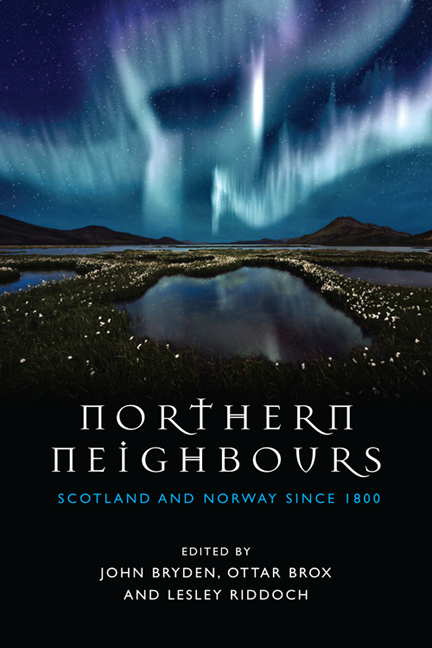Book contents
- Frontmatter
- Contents
- Acknowledgements
- Foreword
- 1 Introduction
- 2 Towards a Theory of Divergent Development
- 3 Cousins Divided? Development in and of Political Institutions in Scotland and Norway since 1814
- 4 Agrarian Change in Scotland and Norway: Agricultural Production, Structures, Politics and Policies since 1800
- 5 The Evolution of Local Government and Governance in Scotland and Norway
- 6 The Development of Industry and North Sea Oil in Scotland and Norway
- 7 Reflections on the Making of Norway
- 8 Money and Banking in Scotland and Norway
- 9 Religion in Scotland and Norway
- 10 The Nordic Welfare Model in Norway and Scotland
- 11 Access, Nature, Culture and the Great Outdoors – Norway and Scotland
- 12 Education in Norway and Scotland: Developing and Re-forming the Systems
- 13 Norway and the United Kingdom/Scotland after the Second World War
- 14 Conclusions
- The Contributors
- Bibliography
- Index
Foreword
Published online by Cambridge University Press: 05 August 2016
- Frontmatter
- Contents
- Acknowledgements
- Foreword
- 1 Introduction
- 2 Towards a Theory of Divergent Development
- 3 Cousins Divided? Development in and of Political Institutions in Scotland and Norway since 1814
- 4 Agrarian Change in Scotland and Norway: Agricultural Production, Structures, Politics and Policies since 1800
- 5 The Evolution of Local Government and Governance in Scotland and Norway
- 6 The Development of Industry and North Sea Oil in Scotland and Norway
- 7 Reflections on the Making of Norway
- 8 Money and Banking in Scotland and Norway
- 9 Religion in Scotland and Norway
- 10 The Nordic Welfare Model in Norway and Scotland
- 11 Access, Nature, Culture and the Great Outdoors – Norway and Scotland
- 12 Education in Norway and Scotland: Developing and Re-forming the Systems
- 13 Norway and the United Kingdom/Scotland after the Second World War
- 14 Conclusions
- The Contributors
- Bibliography
- Index
Summary
The comparative approach is one of the most useful in the intellectual toolkit of the historian. It enables the scholar to determine what is distinctive and what is commonplace about the country he or she is primarily interested in studying. It encourages an analytical rather than a descriptive discourse as questions, paradoxes, problems and puzzles arise which would otherwise remain hidden or dormant without such a broader context of investigation. The pitfalls of exceptionalism, introspection, parochialism and navel-gazing in national histories can be avoided to some extent at least. Invaluable also is the fact that some features which domestic historians take for granted can often immediately seem striking and intriguing to the outsider.
The historiography of modern Scotland has already benefited significantly from the approach. In the final three decades of the last century a series of conferences, followed by publication of their proceedings, was organised to explore the comparative historical development of Ireland and Scotland. At the heart of the discussions was a central issue. Around 1700 the social, economic, resource and demographic contours of both countries seemed probably similar. Indeed, there was some evidence that Ireland showed more promise of material progress than Scotland. Instead, however, Scotland experienced rapid industrialisation from the middle decades of the eighteenth century and eventually a position of global economic hegemony while Ireland's tragic fate culminated in the horrors of the Great Famine, the most terrible human catastrophe in nineteenth-century Europe. Scholars on both sides of the Irish Sea learned much about the causes and nature of the development paths of the two societies until the project finally came to an end more than a decade or so ago.
Now in this important book we can read another exciting attempt to examine through the comparative lens the modern histories of Norway and Scotland. A team of interdisciplinary experts drawn from both countries and elsewhere in the UK have been assembled to consider the radically different historical paths of two small nations and the social, political and economic consequences from c. 1800 to the present day.
- Type
- Chapter
- Information
- Northern NeighboursScotland and Norway since 1800, pp. ix - xPublisher: Edinburgh University PressPrint publication year: 2015

